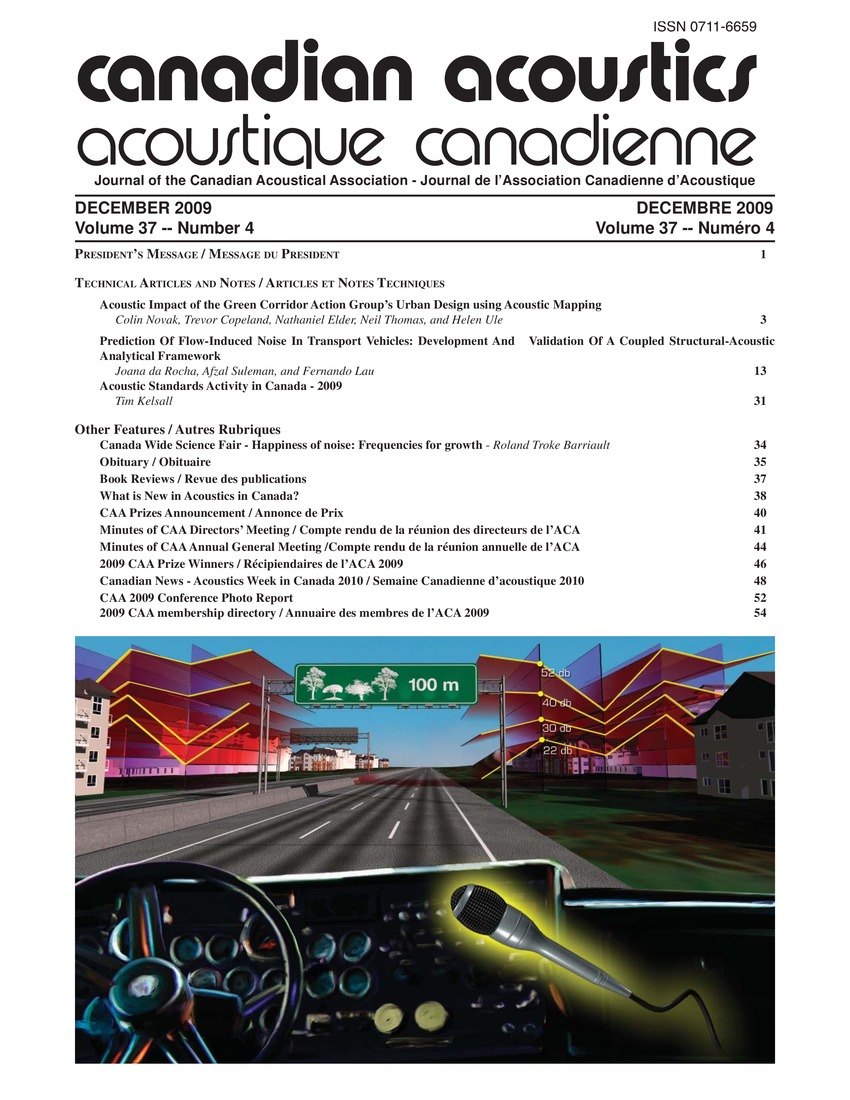Acoustic impact of the green corridor action group's urban design using acoustic mapping
Keywords:
Acoustics, Bridges, Noise abatement, Noise pollution, Profitability, Reengineering, Reverse engineering, Acoustic design, Acoustic engineering, Acoustic impacts, Acoustic mapping, Design proposal, Environmental noise, Environmental noise levels, Landscape design, Noise legislation, Noise levels, Not-for-profit organization, Psychological health, Residential areas, Soundscapes, Traffic noise, Urban designAbstract
The Green Corridor is a not-for-profit organization which has proposed a green landscape concept along the roadway leading to the Ambassador Bridge, the major international crossing between Canada and the USA. In addition to improving the aesthetics of this mostly concrete and industrialized transportation route, the Green Corridor group had the added goal of wanting to improve the soundscape of the nearby neighbourhoods with innovated landscape designs. The high levels of traffic noise within the area are the result from this roadway being one of the busiest land trade corridors in the world. This study analyzed the changes proposed by the Green Corridor action group from an acoustic engineering perspective. The study first measured and modeled existing environmental noise conditions which included the implementation of a reverse engineering exercise to ensure an accurate acoustic map. This was followed by a second model to predict the expected noise levels with the implementation of the Green Corridor design proposals. As a result, this study was able to identify some areas where the proposed Green Corridor changes, if implemented, would be effective in reducing the local environmental noise levels. Other areas were identified where the proposed designs would have no positive acoustic benefit and would require additional abatement if the affected residential area were to meet provincial noise guidelines. A discussion of the benefits of good acoustic design, as well as improved noise legislation is also included. Finally, this study explored the possible physical and psychological health effects to residents living in those areas exposed to severe noise levels.Additional Files
Published
How to Cite
Issue
Section
License
Author Licensing Addendum
This Licensing Addendum ("Addendum") is entered into between the undersigned Author(s) and Canadian Acoustics journal published by the Canadian Acoustical Association (hereinafter referred to as the "Publisher"). The Author(s) and the Publisher agree as follows:
-
Retained Rights: The Author(s) retain(s) the following rights:
- The right to reproduce, distribute, and publicly display the Work on the Author's personal website or the website of the Author's institution.
- The right to use the Work in the Author's teaching activities and presentations.
- The right to include the Work in a compilation for the Author's personal use, not for sale.
-
Grant of License: The Author(s) grant(s) to the Publisher a worldwide exclusive license to publish, reproduce, distribute, and display the Work in Canadian Acoustics and any other formats and media deemed appropriate by the Publisher.
-
Attribution: The Publisher agrees to include proper attribution to the Author(s) in all publications and reproductions of the Work.
-
No Conflict: This Addendum is intended to be in harmony with, and not in conflict with, the terms and conditions of the original agreement entered into between the Author(s) and the Publisher.
-
Copyright Clause: Copyright on articles is held by the Author(s). The corresponding Author has the right to grant on behalf of all Authors and does grant on behalf of all Authors, a worldwide exclusive license to the Publisher and its licensees in perpetuity, in all forms, formats, and media (whether known now or created in the future), including but not limited to the rights to publish, reproduce, distribute, display, store, translate, create adaptations, reprints, include within collections, and create summaries, extracts, and/or abstracts of the Contribution.


